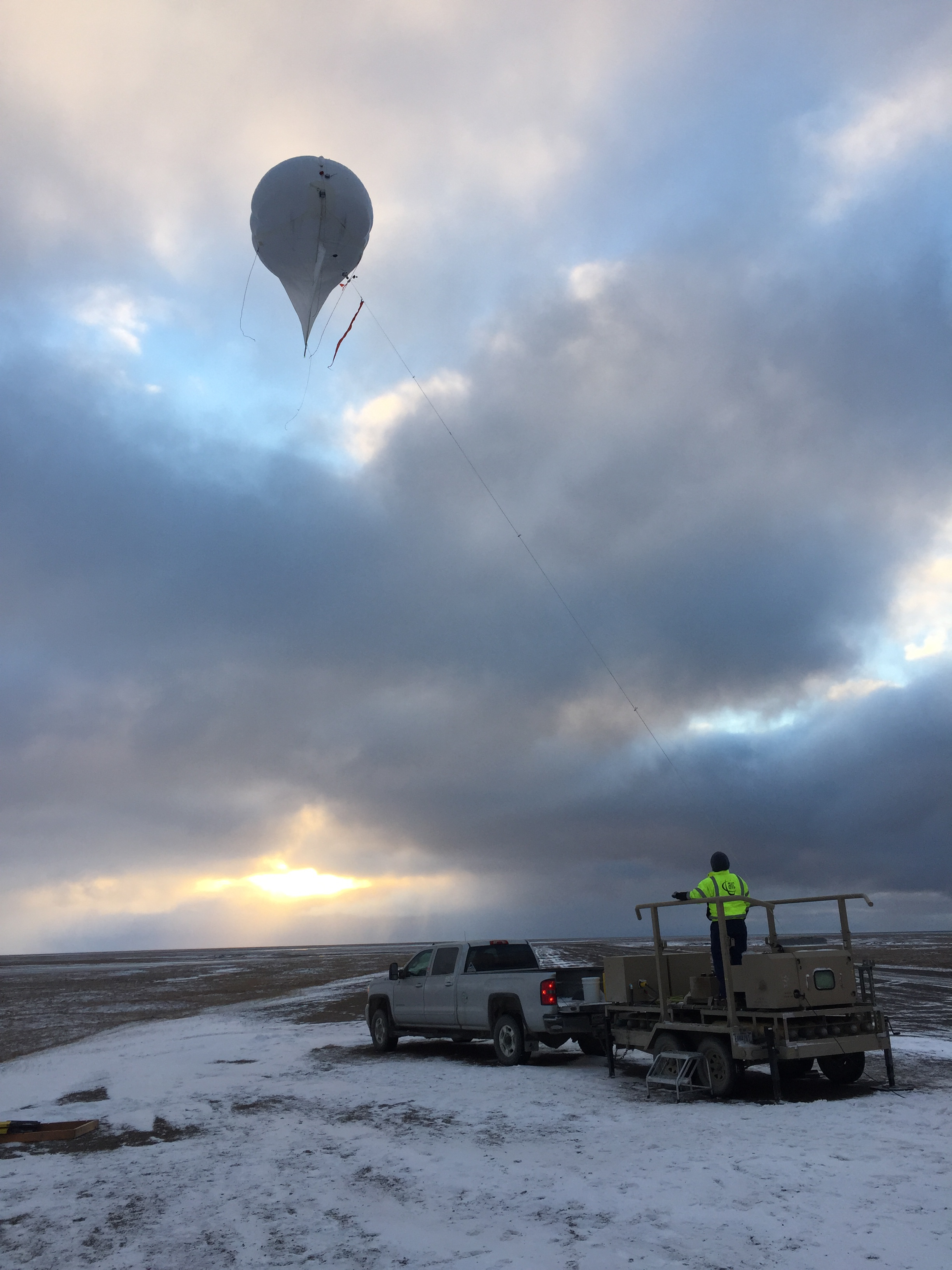Using ARM tethered balloon measurements to assess arctic aerosol stratification
Submitter:
Creamean, Jessie — Colorado State University
Area of research:
Aerosol Properties
Journal Reference:
Science
We evaluated the vertical structure of aerosols relative to clouds in the lower arctic atmosphere using ARM tethered balloon measurements at Oliktok Point, Alaska.
Impact
This study tackles the problem of the very limited knowledge on arctic aerosol vertical structure in order to improve understanding of aerosol sources and their impacts on clouds. This is important given the poorly quantified roles of aerosols and clouds in controlling surface temperatures in the rapidly warming Arctic.
Summary
The interactions between clouds and aerosols are poorly quantified in the Arctic, in part due to: (1) limited observations of vertical structure of aerosols relative to clouds and (2) ground-based observations often being inadequate for assessing aerosol impacts on cloud formation in the characteristically stratified arctic atmosphere. In this paper, we present a novel evaluation of arctic aerosol vertical distributions using almost three years’ worth of ARM tethered balloon measurements spanning multiple seasons at Oliktok Point, Alaska. Aerosols were examined in tandem with atmospheric stability and ground-based remote sensing of cloud properties to specifically address the representativeness of near-surface aerosols to those at cloud base. We found that ground-based aerosol number concentrations were unequal to those at cloud base 86% of the time. Intermittent aerosol layers were observed 63% of the time due to poorly mixed below-cloud environments, mostly in the spring, causing a decoupling of the surface from the cloud layer. A uniform distribution of aerosol below cloud was observed only 14% of the time due to a well-mixed below-cloud environment, mostly during the fall. In general, a combination of aerosol sources, thermodynamic structure, and wet removal processes from clouds and precipitation likely played a key role in establishing observed aerosol vertical structure. Results such as these could be used to improve future parameterizations of aerosols and their impacts on arctic cloud formation and radiative properties.


